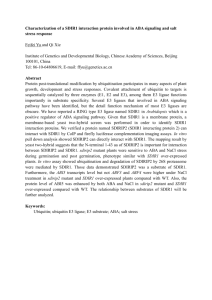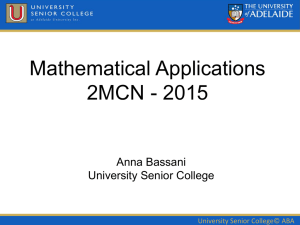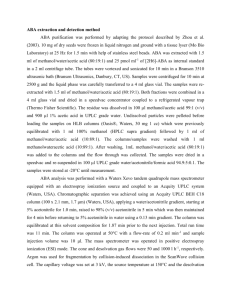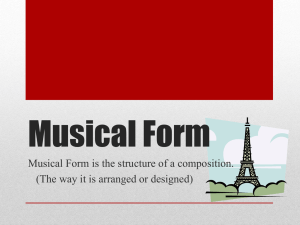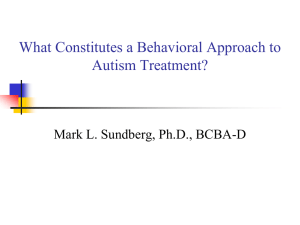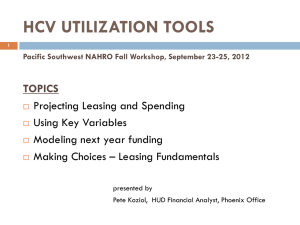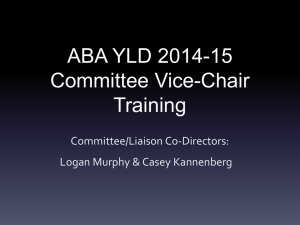FA Slides - FIT ABA Materials
advertisement
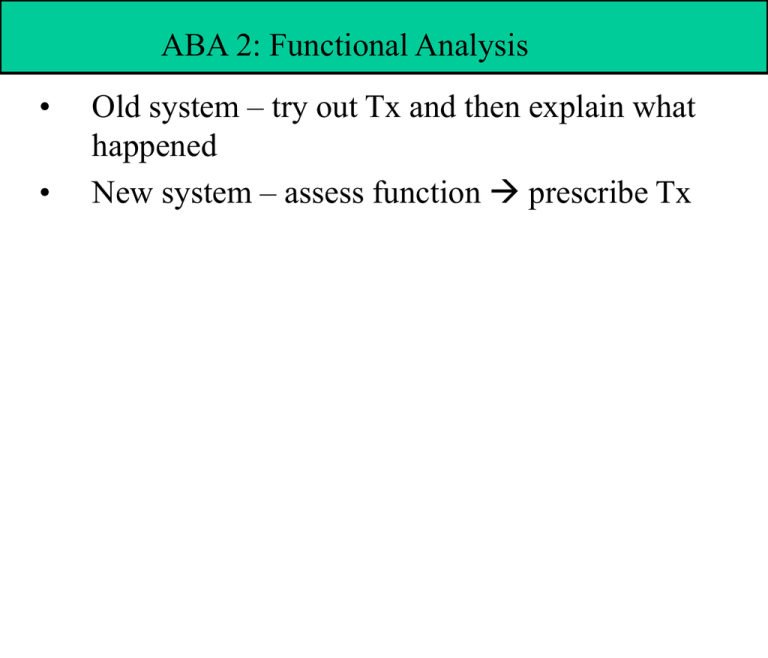
ABA 2: Functional Analysis • • Old system – try out Tx and then explain what happened New system – assess function prescribe Tx ABA 2: Functional Analysis • FA models – AB – shows functional relation between EO and behavior; less compelling as reinforcers are not varied; usually done in extinction • • – Behavior occurs because perhaps in extinction or accidental reinforcement Task stimuli may signal availability of attention, thus, results may be hard to differentiate ABC - more compelling, as putative reinforcer is varied. ABA 2: Functional Analysis – Why AB models? • ABC may strengthen new classes, but this seems rare (but see some studies with tangibles) – – – • – Also these reinforcers are often already delivered in the environment for problem behavior. Important to gather descriptive evidence of possible relations between behavior and tangibles. Moreover, creating new operants may help alert caregivers that this could happen in new environments. AB assessments can be quick and easy Best practice? ABC analyses ABA 2: Functional Analysis ABA 2: Functional Analysis ABA 2: Functional Analysis • Criteria for inclusion of review: – – – – – Separate FA, not just in Tx Problem behavior – behavioral excess that someone complains about Direct observation and measurement of problem behavior (no ratings, questionnaires, etc) At least 2 conditions in which a variable was manipulated. Studies that relied just on descriptive analysis were excluded. AB model and ABC model ABA 2: Functional Analysis • Kinds of elements noted: – – – Brief assessment - <= 2 observations; Full > 2 observations Several elements noted: • • • • • • • • • Antecedent variables Consequences delivered Data display Design Session durations Kind of FA Topographies Population and setting Functions ABA 2: Functional Analysis ABA 2: Functional Analysis • Results: – – – – – Population –kids with disabilities – No FA with adults without disabilities Setting –inpatient facilities, then schools, other Topographies –SIB (64%) agg (40%) then disruption Models: AB and ABC (87%) Condition types • • • Most involved assessments of attention and escape Some have tangibles 60% examined self stim (but are indirect) ABA 2: Functional Analysis ABA 2: Functional Analysis – Control conditions – • • – – Full FA used no demands, toys, and free attention. EO s are eliminated. Brief FA – test condition serves as control for another test (no demands in attention, and no attention in demands) – problem is that it is hard to see self stim or multiply controlled Session duration: 5-15 minutes Assessment duration (# of conditions) – most done until stability obtained • But Northrup looked at a brief FA in 90 min outpatient eval with 1 or 2 sessions some studies did this model ABA 2: Functional Analysis ABA 2: Functional Analysis – Experimental design – • • • Multi-element, ABAB in studies looking at a single variable. – good if rapidly alternating conditions produce interactions among conditions W/D and Reversal Pairwise – each test condition is alternated with a control condition in a multi-element - used to minimize the interaction among conditions ABA 2: Functional Analysis ABA 2: Functional Analysis – Antecedent events: • Most common - variations of social-positive – Consider alone, attention, play – • No attention vs divided attention Variations of social-negative – many studies have just examined demand as a single condition – – Only one examined novelty, duration of instruction, and rate of presentation when behavior produced escape from tasks Need more studies that identify important variables in task escape ABA 2: Functional Analysis – Consequent events • Type/quality – Attention is often reprimands with touch – • • • • • Tone of the reprimand can be important (Drama!) Access to tangibles Escape from tasks A study showed that access to self restraint strengthened SIB Schedule – FR 1 in most; some had intermittent: Duration – Attention for 5-10s, tangibles for 30s, and escape for 30 s ABA 2: Functional Analysis – Reinforcer duration issue: • No reinforcer time subtracted – – • 10 in 5 minutes for attention (6 sec) = 2/min 6 in 5 minutes for escape (30 sec) = 1.2/min Reinforcer time subtracted: – – Attention = 10 in 4 minutes = 2.5/min Escape = 5 in 2 minutes = 2.5/min ABA 2: Functional Analysis • Outcomes of analyses – – – Escape maintained in 34%, attention maintained in 25%, 10 % tangible, automatic – 10% Most aggression was escape; stereotypies were automatic reinf In general, though, function can’t be predicted by topography ABA 2: Functional Analysis • Recommendations/Best Practice – – – – Limit response topographies in the analysis ABC model instead of AB Use control/test pairs unless time is limited Include natural stimuli when possible – but ensure integrity – Take advantage of EO s in assessment – Alone Attention – Control Tangible?? – Include stimuli to signal conditions – Brief sessions (e.g., 10 minutes) if sufficient rates ABA 2: Functional Analysis • Recommendations/Best Practice – – – – Test for automatic reinforcement Test for functional relations between tangibles and behavior only if descriptive suggests it Start with brief and simple, and then to more complex Use descriptive as adjunct to do more complex analyses ABA 2: Functional Analysis • Undifferentiated results – – – Look for odd variables Use natural stimuli in natural environment Minimize topographies; graph them separately ABA 2: Functional Analysis • Undifferentiated results – Increase # of observations
